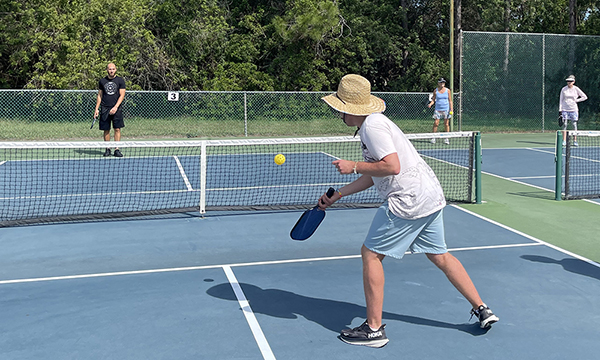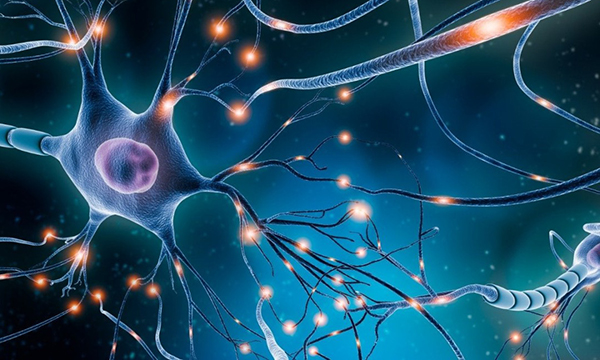JL Foundation™ : Tip of the Week
On this page the Joey Lowenstein Family Foundation (JL Foundation™) will create a library of “Tip of the Week” content — tips and videos about exercise, spirituality, and nutrition while living with autism. Joey’s hope is that through the Joey Lowenstein Family Foundation (JL Foundation™) and its focus on five areas — Athletics, Nutrition, Self-Development, Resolve, and Scientific Research, a combination we call ANSRS™ — he will be able to provide the many people who have autism with ideas, inspiration, and resources to find their own ANSRS™, so that they can fulfill their gifts and live their best lives.
Autism and Sleep
According to the CDC, over 50% of people with autism have chronic sleep problems. An evening breathwork session can put you in the best optimal state for restorative sleep. Many people with autism spectrum disorder (ASD) experience sleep difficulties, which can impact how they feel and function during the day. Additionally, the sleep problems that children with autism experience can take a toll on their parents and caregivers. Practicing good sleep hygiene at home is important for everyone, not just people with autism. Good sleep habits are part of any sleep disorder treatment. Keep a consistent bedtime and wake up time. Do the same quiet activities before bed every night. An evening breathwork session can help to decompress and clear the nervous system to put you in the best optimal state for restorative sleep. In the morning, it sets your day with intension so that you are calm, present, and intentional about how you live your day. End your day clean, and start it clean.
More information at:
https://www.sleepfoundation.org/physical-health/autism-and-sleep

Autism and Exercise
Working out has brain benefits for those with autism — Exercise improves cognitive function, making it easier to retain information and maintain attention span. Exercise reduces anxiety and stress, which is important because individuals with autism tend to have higher stress levels; People with autism often have sleep disorders, and exercise helps improve sleep. When you are figuring out a workout routine, don’t get carried away with variety. These five types of exercise are a great place to start: motor planning exercises, functional strength training, balance training, indoor cycling, and yoga.
More information at:

The Food You Eat Matters : Avoid Sugar 2
Sugar Consumption and Neurotransmitters — Research suggests that there is a correlation between sugar intake and autism symptoms due to the impact of sugar on neurotransmitters in the body. Sugar increases erratic brain cell firing and it is very addictive.
Research appearing in Frontiers in Endocrinology found that people with autism have impaired glucose tolerance and excessive levels of insulin; consuming sugar may magnify improper insulin signaling. Avoiding forms of sugar and refined carbohydrates and increasing lean protein consumption can dramatically improve concentration and judgment.
More information: www.GoldStarRehab.com/parent-resources/sugar-and-autism-correlation

The Food You Eat Matters : Avoid Sugar
Avoiding sugar and refined carbohydrates can dramatically improve concentration and judgment, and decrease impulsiveness.
The food you eat matters. According to the CDC, autism is associated with an array of challenges, including developmental delays, communication problems, and behavioral issues. It is important to realize that the food you eat is either medicine or it is poison. It is either helping your brain, body, and mind or hurting them. Here are the top 5 foods to avoid as they can make autism and co-occurring condition symptoms worse: dairy, gluten, sugar, artificial ingredients (ie: preservatives, dyes, and artificial colors).
More information: www.amenclinics.com/blog/5-foods-can-make-autism-worse/

Breath Work: Warrior Breath
To help regulate himself in stressful situations, Joey uses the Warrior Breath breathing technique to reduce stress and anxiety.
Breath work is a powerful tool to use as a resource. It can be used to aid with autism stress, sleep disorders, anger issues, road rage, and post-traumatic stress disorder (PTSD). The Warrior Breath is a breathing technique that has a grounding element to it and can help you get back to center. It can move the brain from a “fight or flight” mindset, breaking the impulse and surge of adrenaline. Breathing in through the nose and powerfully out though the chest and nose, this breathing exercise is both energizing and calming; it can be a regulator system for the brain within under a minute.
Credit: Warrior Breath Set by Anjali Connors, PsyD
Upregulating Your Life
When making a decision for your life or health, ask yourself, is this the best decision I can make? Does it bring balance to my life? Does it help to upregulate my life?
Clarify and simplify your path forward. Complexity is the mother of procrastination for failure — when there is too much complexity with information it is really hard for people to settle in with what to do and how to do it.
upregulation
/ˌəpˌreɡ(y)əˈlāSH(ə)n/
Noun, physiology, biochemistry
- 1. the increase at the cellular level of the magnitude or rate of a physiological response or biochemical or process, especially of the expression of a gene.
- 2. the increase in the number or density of cell surface receptors for a physiologically active substance, causing an increase in sensitivity in response to persistent exposure.

“Eat to Live” or “Live to Eat”
You can “eat to live” or you can “live to eat”. The quality of the food you ingest determines the integrity of the cells that it builds in your body.
Food is life. Food is fuel. Without nutrition everything dies. Eating to live involves treating food like it is fuel for the body. Often, the inverse “live to eat” approach signals that a disproportionate amount of pleasure becomes vested chiefly or exclusively in the eating experience itself, which typically gives way to unhealthy choices. Simplicity is key — look at food quality and food integrity; look for organic and look for foods with one ingredient — whole foods. Limit or eliminate processed foods.

